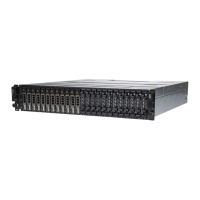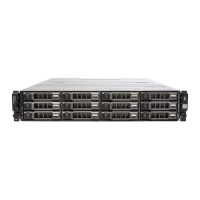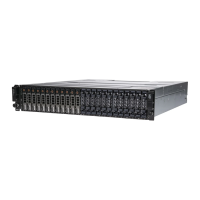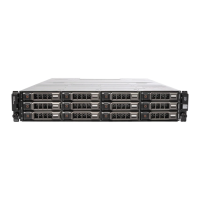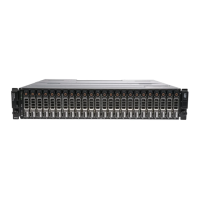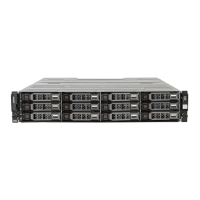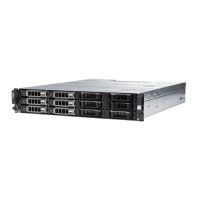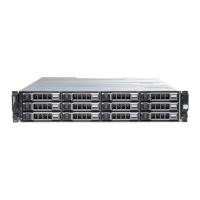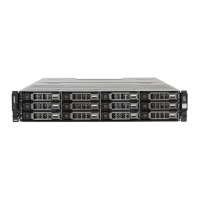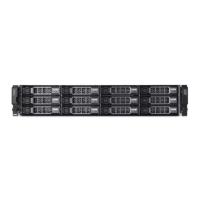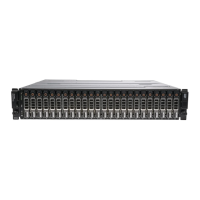
Do you have a question about the Dell PowerVault MD3220 and is the answer not in the manual?
| HDD speed | 15000 RPM |
|---|---|
| RAID levels | 0, 1, 5, 6, 10 |
| Storage drive size | 2.5 \ |
| Storage drive capacity | 146 GB |
| Storage drive interface | Serial Attached SCSI (SAS) |
| Storage drives installed | Yes |
| Installed storage drive type | HDD |
| Supported storage drive types | HDD & SSD |
| Total installed storage capacity | 0.292 TB |
| Maximum supported storage capacity | 38.4 TB |
| Number of storage drives installed | 2 |
| Number of storage drives supported | 24 |
| Chassis type | Rack (2U) |
| Device class | - |
| Product color | Black |
| AC input voltage | 100-240 V |
| AC input frequency | 50 - 60 Hz |
| Number of power supply units | 1 |
| Power supply unit (PSU) capacity | 600 W |
| Operating altitude | -16 - 3048 m |
| Operating temperature (T-T) | 10 - 35 °C |
| Operating relative humidity (H-H) | 10 - 80 % |
| Depth | 508 mm |
|---|---|
| Width | 446.3 mm |
| Height | 86.8 mm |
| Weight | 24200 g |
Overview of the manual's content and organization.
Describes the MD3200 Series as a 2U rack-mounted RAID storage array.
Lists additional resources and documentation for the storage array.
Details the physical components and indicators of the storage array.
Explains the features and indicators on the front panel of the MD3200 and MD3220.
Describes the components and indicators located on the back panel of the array.
Explains the meaning of various power indicator LEDs on the enclosure.
Explains the function of RAID controller modules for performance and management.
Details the physical connectors and features of the SAS RAID controller module.
Explains cache mirroring, write-back, and write-through cache functionalities.
Defines physical disks, disk groups, and virtual disks as logical storage components.
Explains different RAID levels and their impact on performance, redundancy, and capacity.
Covers operations like initialization, consistency checks, and media verification.
Covers operations like RAID level migration, expansion, and defragmentation.
Introduces premium features like snapshots and virtual disk copy.
Explains how to map host servers to virtual disks for access.
Describes creating point-in-time images of virtual disks.
Details the feature for creating full copies of virtual disks.
Describes software that manages redundant data paths for high availability.
Describes the main windows and elements of the Storage Manager interface.
Explains the EMW for high-level management of multiple storage arrays.
Describes the AMW for managing individual storage arrays.
Explains the two methods for managing the storage array.
Guides through initial setup tasks like naming, password, and basic configuration.
Explains how to set or change the storage array password for security.
Guides on setting up e-mail and SNMP alerts for array events.
Explains how to enable or disable the event monitoring service.
Details how to configure host access and map virtual disks to hosts.
Explains how to create and manage groups of hosts for shared access.
Covers failover mechanisms for maintaining data access during path failures.
Explains the process of organizing physical disks into groups and creating virtual disks.
Details security features for self-encrypting disks and key management.
Guides on configuring hot spare disks for data redundancy.
Provides guidelines for mapping virtual disks to hosts.
Details how to change the RAID level for all virtual disks in a group.
Provides a straightforward method for creating snapshots.
Offers advanced options for creating snapshots with more control.
Explains how to manage and increase the capacity of snapshot repositories.
Describes how to re-create previously disabled snapshots.
Details creating a virtual disk copy for Microsoft Cluster Server shared disks.
Guides on the process of creating a virtual disk copy using the wizard.
Explains how to adjust the priority of virtual disk copy operations.
Covers re-initiating a virtual disk copy that was stopped or failed.
Explains how to remove virtual disk copy pairs from the manager.
Introduces Device Mapper Multipath for enabling multipath on Linux.
Details the command-line steps for DM multipathing configuration.
Provides guidance on resolving issues related to DM multipath.
Guides on downloading firmware for RAID controllers and NVSRAM.
Guides on downloading firmware updates for physical disks.
Covers downloading firmware for expansion module EMMs.
Explains SMART for monitoring disk health and predicting failures.
Covers the installation and removal of hard drives and drive blanks.
Covers the installation and removal of RAID controller modules.
Covers installation and removal of power supply and cooling fan modules.
Covers removal and installation of the backplane.
Guides on viewing and saving firmware information for all components.
Discusses integration with Windows services like VDS and VSS.
Explains how to interpret status icons and identify problems in the array.
Details how to collect and generate support data for analysis.
Introduces the Recovery Guru for diagnosing and resolving critical events.
Provides steps to recover from an unresponsive storage array.
Emphasizes safety precautions when performing troubleshooting.
Guides on diagnosing issues during the array's startup sequence.
Details steps for diagnosing and resolving power and cooling issues.
Covers diagnosing and resolving problems with RAID controller modules.
Provides steps for troubleshooting issues related to hard drives.
Provides guidance for dealing with a storage array exposed to moisture.
Lists critical events that could lead to array failure or data loss.
Provides contact information and options for obtaining support from Dell.
